
Situated in the fabulous Vondelpark, the Filmmuseum Amsterdam is the national centre for cinematography in the Netherlands. In its collection are over 35,000 film titles which, together, add up to more than 60,000,000 metres of film. The collection also comprises photos, posters, newspaper clippings, magazines and many other items relating to film history.
The international collection spans the complete history of cinematography from 1898 until today. In addition to this the collection is expanding with new film titles being added every year.
The main goal of the Filmmuseum is to encourage and promote film culture in the Netherlands. By collecting, restoring and screening the many ‘film treasures of the past’ as well as by presenting new films in the art- house genre we aim to achieve this goal.
Distribution & Production
Through its distribution branch the Filmmuseum enables Dutch cinemas throughout the country to screen both classics and contemporary art house films. The Filmmuseum also has its own video and DVD label through which it releases both archive films and contemporary art house films.
The Filmmuseum is also involved in production and produces so-called found footage films, historical programmes, theatrical shows and publications on film history. Some Dutch film productions are also sponsored by the Filmmuseum.
Locations & Programmes
The Filmmuseum is spread across two venues and houses five theatres: two in the Film-museum itself and three in Filmmuseum Cine-rama. There are up to fourteen daily screenings. We offer a wide selection of films ranging from theme programmes, classics, archive films, cult films to special children’s programmes. The emphasis is placed on unique films with a film-historical significance and on contemporary cinema. Special theatrical shows combine silent films with theatre, music and entertainment. In September 2003 the museum opened a exhibition space in which it displays program- related items
Please visit the museum's website for further information: www.filmmuseum.nl.
Information Centre
The Filmmuseum Information Centre houses the largest collection of books on film and film-related subjects in the Netherlands. Here students and researchers as well as the general public can find anything on the subject of film.
Apart from books and magazines there are also reference works available on CD-ROM as well as videotapes of films from the Filmmuseum collection. A variety of newspapers can be consulted in the reading room. Our staff members will be more than happy to advise you on the Filmmuseum collections and to help you use our computerized databases.
The collection includes 20,000 books in various languages; a large section of reference books and screenplays; 1,900 magazines dating back to 1877; 300,000 press clippings including reviews, biographies, and other film-related documents; international collections of journals on microfilm dating from 1896 to 1927; cinema programmes and week listings dating from 1950 onwards; and annual reports and addresses of other film organizations.
Computerized databases provide easy access to all of the Filmmuseum collections. Recent issues of magazines, as well as bound volumes and books from 1945 to the present are readily available. Access to books and magazines from an earlier period can be requested at the information desk. The same applies to the other collections. The collections stored in depots elsewhere cannot be consulted instantly. Requests for access have to be made by telephone, fax or e-mail.
Books and documents cannot be borrowed but photocopying facilities are available.
Video tapes of Filmmuseum films can be viewed in video booths. Viewing rates: €12.50 / half a day. Students: €4.50 / half a day; on request photocopies of articles can be sent by mail or by fax. Up to five pages can be sent by fax, more pages can only be sent by mail. This service is not free and a small amount will be charged!
Addresses
FILMMUSEUM
Vondelpark 3, 1071 AA Amsterdam (between park entrances Roemer Visscherstraat and Vondelstraat)
P.O. Box 74782, 1070 BT Amsterdam
Tel 020 - 5891400
Fax 020 - 6833401
Website www.filmmuseum.nl
FILMMUSEUM CINERAMA
Marnixstraat 400, 1017 PL Amsterdam
Reservations: Pathé line 0900-1458 (0,25 € pm)
INFORMATION CENTRE
Vondelstraat 69, 1071 AA, Amsterdam
(adjacent to the Filmmuseum)
Open: Tuesday - Friday, 10.00 am - 5.00 pm; Saturday, 11.00 am - 5.00 pm
telephone: 020- 5891 435 (after 1.30 pm)
fax: 020-5891 454
How to get there by public transportation
Filmmuseum and Information Centre:
from Centraal Station: tram line 1 & 6, stop at Eerste Constantijn Huygensstraat; tram line 2 & 5, stop at Potterstraat / Stedelijk Museum; from Amstel Station or Sloterdijkstation: tram line 12 & 3, stop at Eerste Constantijn Huygenssstraat, tram line 6, stop at Eerste Constatijn Huygensstraat; tram line 20 (‘circle tram’), stop at Stedelijk Museum
Filmmuseum Cinerama:
tram line 1, 2, 5, 6, 7, 10, stop at Leidseplein; bus line 142s, 145, 170, 172, 179, stop at Leidseplein
Prices & ticket reservation
Regular admission: €7.20 (weekends €7.80)
Discount ticket (student card holders, group bookings): €6.- (weekends €6.50)
Members: €3.75
Children: €5.-
(All prices include a visit to the exhibition)
Admission to the exhibition only: €2.-
Box office opening times: weekdays at 10 am, on Saturdays and Sundays one hour before the first screening.
Reservations can be made by phone up to one week in advance on: 020 - 5891400
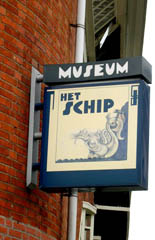 One of the most expressionist apartment blocks in Amsterdam, located at the Spaarndammerplantsoen, is called Het Schip (The Ship). It has been built in the years 1911-1920 and was designed for the housing association Eigen Haard by the architect Michel de Klerk. It featured 120 low rent apartments and the public utility buildings as school, post office and a community house.
One of the most expressionist apartment blocks in Amsterdam, located at the Spaarndammerplantsoen, is called Het Schip (The Ship). It has been built in the years 1911-1920 and was designed for the housing association Eigen Haard by the architect Michel de Klerk. It featured 120 low rent apartments and the public utility buildings as school, post office and a community house. 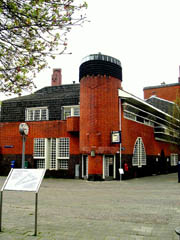 The whole area of Het Schip is an interesting quarter, largely in the Amsterdam School style, now extensively renovated. You may see how inhabitants of Amsterdam live in the districts less frequented by the tourists.
The whole area of Het Schip is an interesting quarter, largely in the Amsterdam School style, now extensively renovated. You may see how inhabitants of Amsterdam live in the districts less frequented by the tourists. 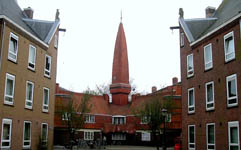 How to get there:
How to get there: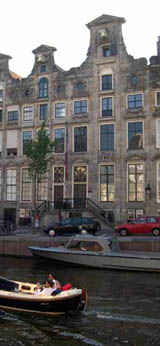 The museum about the world of just one book – The Bible. The Biblical Museum (in Dutch: Bijbels Museum) is housed in the very heart of the old Amsterdam, at the Herengracht canal. An interesting historical museum exhibits objects from the Judeo-Christian tradition, history of the Bible and the influence of the Bible on the society and fine arts.
The museum about the world of just one book – The Bible. The Biblical Museum (in Dutch: Bijbels Museum) is housed in the very heart of the old Amsterdam, at the Herengracht canal. An interesting historical museum exhibits objects from the Judeo-Christian tradition, history of the Bible and the influence of the Bible on the society and fine arts. 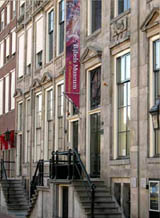 The feel
The feel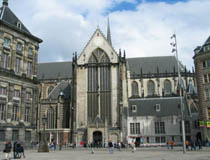 Adjacent to the Royal Palace is Nieuwe Kerk, a church of the highest order. Akin to the Gothic churches of France, it was built circa 1400 due to the shortage of churches in the city and over the years, many changes have been made. The New Church remarkably managed to escape major damage in 1421 and 1452, the two great fires of Amsterdam, although two centuries later it was reduced to ashes when plumbers accidentally started a fire. The church however has been faithfully restored to its former glory, exhibiting the original early Renaissance style features throughout even though it remains tower-less.
Adjacent to the Royal Palace is Nieuwe Kerk, a church of the highest order. Akin to the Gothic churches of France, it was built circa 1400 due to the shortage of churches in the city and over the years, many changes have been made. The New Church remarkably managed to escape major damage in 1421 and 1452, the two great fires of Amsterdam, although two centuries later it was reduced to ashes when plumbers accidentally started a fire. The church however has been faithfully restored to its former glory, exhibiting the original early Renaissance style features throughout even though it remains tower-less.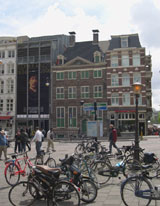 Not far from the Chinese quarter of Amsterdam and right behind the Red Light District if you walk from the Dam square east, in a direct proximity of the Waterlooplein, the house stands which the famous Dutch painter Rembrandt owned and lived in, between 1639 and 1660.
Not far from the Chinese quarter of Amsterdam and right behind the Red Light District if you walk from the Dam square east, in a direct proximity of the Waterlooplein, the house stands which the famous Dutch painter Rembrandt owned and lived in, between 1639 and 1660. 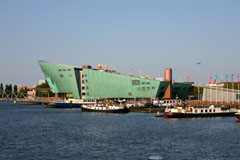 NEMO houses loads of experiments and exhibitions inside its giant green hull on Oosterdok. No matter your background you will learn something new and have fun while doing it. Attractions change regularly, check the homepage to get the latest word.
NEMO houses loads of experiments and exhibitions inside its giant green hull on Oosterdok. No matter your background you will learn something new and have fun while doing it. Attractions change regularly, check the homepage to get the latest word. Situated in the fabulous Vondelpark, the Filmmuseum Amsterdam is the national centre for cinematography in the Netherlands. In its collection are over 35,000 film titles which, together, add up to more than 60,000,000 metres of film. The collection also comprises photos, posters, newspaper clippings, magazines and many other items relating to film history.
Situated in the fabulous Vondelpark, the Filmmuseum Amsterdam is the national centre for cinematography in the Netherlands. In its collection are over 35,000 film titles which, together, add up to more than 60,000,000 metres of film. The collection also comprises photos, posters, newspaper clippings, magazines and many other items relating to film history. 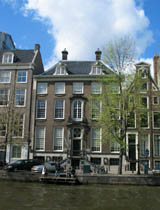 The Willet-Holthuysen Museum houses a remarkable collection of fine and applied art acquired by Abraham Willet. Selections from the collection are shown in alternating exhibitions in the rooms on the first floor. Other exhibitions relating to the theme of the collection are also shown on the display.
The Willet-Holthuysen Museum houses a remarkable collection of fine and applied art acquired by Abraham Willet. Selections from the collection are shown in alternating exhibitions in the rooms on the first floor. Other exhibitions relating to the theme of the collection are also shown on the display.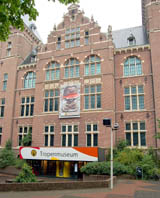 This museum is one of Amsterdam hidden treasures. Located off city centre in a beautiful old building in East Amsterdam (Amsterdam Oost), Tropenmuseum often remains forgotten, like an old collection of post stamps. However, if you are interested in other cultures, other countries and distant lands - do no miss it. Tropenmuseum exhibit is modern, fascinating on many levels and inspiring. Moreover - a great museum to visit with kids, it is like a journey to all exotic.
This museum is one of Amsterdam hidden treasures. Located off city centre in a beautiful old building in East Amsterdam (Amsterdam Oost), Tropenmuseum often remains forgotten, like an old collection of post stamps. However, if you are interested in other cultures, other countries and distant lands - do no miss it. Tropenmuseum exhibit is modern, fascinating on many levels and inspiring. Moreover - a great museum to visit with kids, it is like a journey to all exotic. 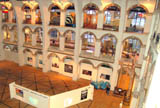 A visit to the Tropenmuseum starts on the second floor accessible with a big lift. The show is divided by continents. It begins with South America and through Africa reaches Asia and the Antilles on the first floor. Additionally, on the ground floor, there is an exhibition on Man & Environment and to the left from the entry Tropenmuseum Junior – a separate part of the museum dedicated for children, but aimed at mainly at Dutch schools, less at the young international guests.
A visit to the Tropenmuseum starts on the second floor accessible with a big lift. The show is divided by continents. It begins with South America and through Africa reaches Asia and the Antilles on the first floor. Additionally, on the ground floor, there is an exhibition on Man & Environment and to the left from the entry Tropenmuseum Junior – a separate part of the museum dedicated for children, but aimed at mainly at Dutch schools, less at the young international guests. 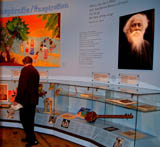 Each month the curators select few objects from the immense collection of the Tropenmuseum and present them in special way, telling the whole story behind it and tracing its route before it arrived at the museum’s collection. A special information card is given to visitors looking at these objects.
Each month the curators select few objects from the immense collection of the Tropenmuseum and present them in special way, telling the whole story behind it and tracing its route before it arrived at the museum’s collection. A special information card is given to visitors looking at these objects.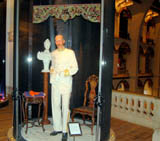 Adults and minors from age of 17 years - € 7,50; children and minors younger than 17 – € 4,-, family day ticket € 20,- , older people 65+ and students (ID required) € 6,-. Free entry with the Museumkaart. Audio tour in Dutch, English, French and German is free of charge; € 5,- reimbursable deposit for the headphones. The museum shop is selling interesting objects from other lands, as beautiful original African masks. The shop is accessible only with the entry ticket.
Adults and minors from age of 17 years - € 7,50; children and minors younger than 17 – € 4,-, family day ticket € 20,- , older people 65+ and students (ID required) € 6,-. Free entry with the Museumkaart. Audio tour in Dutch, English, French and German is free of charge; € 5,- reimbursable deposit for the headphones. The museum shop is selling interesting objects from other lands, as beautiful original African masks. The shop is accessible only with the entry ticket.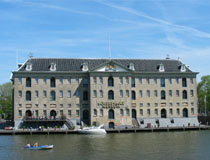 The Netherlands Maritime Museum is housed in the National Naval Depot which is a former arsenal of the Dutch Navy, over 300 years old.
The Netherlands Maritime Museum is housed in the National Naval Depot which is a former arsenal of the Dutch Navy, over 300 years old. 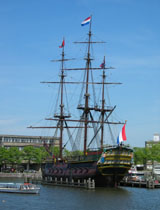
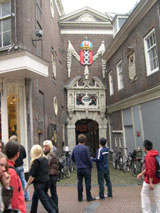 This managed by the Historical Museum of Amsterdam gallery of the old portaits of the wealhty citizens of Amsterdam, is free an easily accessible. You may enter it from the most busy commercial street – Kalverstraat, during your visit to the Amsterdam Historical Museum or from the quiet courtyard of Begijnhof.
This managed by the Historical Museum of Amsterdam gallery of the old portaits of the wealhty citizens of Amsterdam, is free an easily accessible. You may enter it from the most busy commercial street – Kalverstraat, during your visit to the Amsterdam Historical Museum or from the quiet courtyard of Begijnhof. 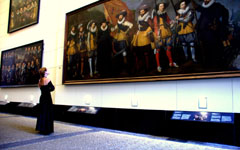 The feel:
The feel: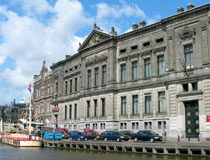 The Allard Pierson Museum, part of the Department of Mediterranean Archaeology at the University of Amsterdam, houses a collection of Mediterranean antiquities and artefacts and is devoted to placing the sources of Western tradition and culture in an accessible historical perspective.
The Allard Pierson Museum, part of the Department of Mediterranean Archaeology at the University of Amsterdam, houses a collection of Mediterranean antiquities and artefacts and is devoted to placing the sources of Western tradition and culture in an accessible historical perspective. 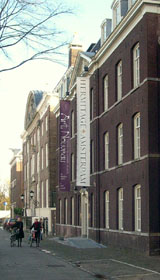 Russian former capital - the city of Saint Petersburg, today one of the Europe’s largest cities, has been built by the tsar Peter the Great starting from 1703, after the tsar’s stay in Zaandam and Amsterdam during his grand trip to Western Europe (so called Great Embassy: 1697 - 1698). The city original name had been Sankt Petersburg. Known for years as Leningrad, today again the city name is of Dutch origin. But the Dutch element is not only in the city name: Saint Petersburg was also built with the help of the Dutch, since the area chosen for its foundation, was muddy and full of swamps.
Russian former capital - the city of Saint Petersburg, today one of the Europe’s largest cities, has been built by the tsar Peter the Great starting from 1703, after the tsar’s stay in Zaandam and Amsterdam during his grand trip to Western Europe (so called Great Embassy: 1697 - 1698). The city original name had been Sankt Petersburg. Known for years as Leningrad, today again the city name is of Dutch origin. But the Dutch element is not only in the city name: Saint Petersburg was also built with the help of the Dutch, since the area chosen for its foundation, was muddy and full of swamps. 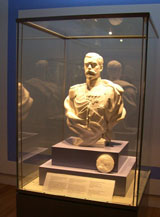 Hermitage Amsterdam organizes exhibitions on one selected theme, giving usually two showings each year. All the exhibited objects are transported from the State Hermitage Museum in Saint Petersburg, first with a truck to Finland, and then shipped to North of Germany, to be again brought by truck to Amsterdam. After the exhibitions all the objects travel back to Russia. The museum is closed in short periods of the exposition change.
Hermitage Amsterdam organizes exhibitions on one selected theme, giving usually two showings each year. All the exhibited objects are transported from the State Hermitage Museum in Saint Petersburg, first with a truck to Finland, and then shipped to North of Germany, to be again brought by truck to Amsterdam. After the exhibitions all the objects travel back to Russia. The museum is closed in short periods of the exposition change. 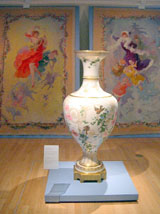 Hermitage Amsterdam
Hermitage Amsterdam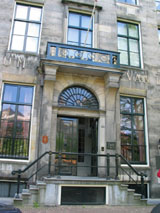 A small, but very interesting because of its local, intense sphere, Museum Van Loon is in fact an impressive patrician house like many in the center of Amsterdam. This is your unique chance of entering such a house, still privately owned by the aristocratic Van Loon family, which about thirty years ago decided to open it to the public. There are still parts of the house which remain closed to the visitors and although its owners do not reside in the house, you may sometimes get a glimpse of their relatives or friends sneaking through the museum to their closed quarters. You will be allowed to visit the kitchen, the garden, wander through beautiful reception rooms, climb the stairs up to the private quarters on the first floor. Exhibition is presented in a way to give you the feeling that the owners have just left for a walk. Bread in the kitchen has dried out, true, may be even has been covered with a layer of plastic and paint, but you will get a rare chance of getting the feel of the Dutch life from inside. The china is on the table, sheets cover the beds, fine paintings look at you from the walls.
A small, but very interesting because of its local, intense sphere, Museum Van Loon is in fact an impressive patrician house like many in the center of Amsterdam. This is your unique chance of entering such a house, still privately owned by the aristocratic Van Loon family, which about thirty years ago decided to open it to the public. There are still parts of the house which remain closed to the visitors and although its owners do not reside in the house, you may sometimes get a glimpse of their relatives or friends sneaking through the museum to their closed quarters. You will be allowed to visit the kitchen, the garden, wander through beautiful reception rooms, climb the stairs up to the private quarters on the first floor. Exhibition is presented in a way to give you the feeling that the owners have just left for a walk. Bread in the kitchen has dried out, true, may be even has been covered with a layer of plastic and paint, but you will get a rare chance of getting the feel of the Dutch life from inside. The china is on the table, sheets cover the beds, fine paintings look at you from the walls.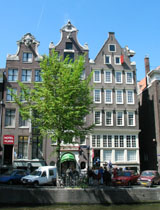 Museum Our Lord in the Attic (previously called Museum Amstelkring) is one of the most cherished museums in Amsterdam with a special atmosphere that surprises every visitor.
Museum Our Lord in the Attic (previously called Museum Amstelkring) is one of the most cherished museums in Amsterdam with a special atmosphere that surprises every visitor.  At first you will experience the rich smell of roasted coffee and you will see the shop, which could have been standing here unchanged fifty or even eighty years ago. Since five generations the Geels family trades in coffee and tea. The company has been established in 1864, that is at the time when first coffee houses opened in Amsterdam. Still today, Mrs. Esther Geels remains involved in the company work.
At first you will experience the rich smell of roasted coffee and you will see the shop, which could have been standing here unchanged fifty or even eighty years ago. Since five generations the Geels family trades in coffee and tea. The company has been established in 1864, that is at the time when first coffee houses opened in Amsterdam. Still today, Mrs. Esther Geels remains involved in the company work.  More a home collection of dusty bits and pieces, than a real museum - nevertheless the atmosphere of the whole shop and the museum is truly unique. Not to be missed, especially if you are a coffee aficionado.
More a home collection of dusty bits and pieces, than a real museum - nevertheless the atmosphere of the whole shop and the museum is truly unique. Not to be missed, especially if you are a coffee aficionado. Special guided tours of the museum may be organized for small groups of visitors. Contact the Geels & Co. shop for the information.
Special guided tours of the museum may be organized for small groups of visitors. Contact the Geels & Co. shop for the information. How to get there:
How to get there: Everything about the Geelvinck Hinlopen House was designed and built to showcase the wealth and position of the owners Albert Geelvinck and Sara Hinlopen. The Geelvinck family were active in the East India and West India trading companies, and in1687, built this house as a family home suitable for entertaining business guests.
Everything about the Geelvinck Hinlopen House was designed and built to showcase the wealth and position of the owners Albert Geelvinck and Sara Hinlopen. The Geelvinck family were active in the East India and West India trading companies, and in1687, built this house as a family home suitable for entertaining business guests.  Of the four rooms one is a library with deep leather chairs and a wonderfully decorated ceiling was revealed when the house was renovated and has been restored to its 19th century glory. Two others, the Red and Blue rooms were the drawing and dining room respectively, and have period paintings and furniture sourced from other houses.
Of the four rooms one is a library with deep leather chairs and a wonderfully decorated ceiling was revealed when the house was renovated and has been restored to its 19th century glory. Two others, the Red and Blue rooms were the drawing and dining room respectively, and have period paintings and furniture sourced from other houses. 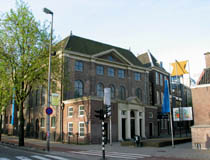 The Jewish Historical Museum is the only museum in the Netherlands to focus on Jewish history, religion and culture. The museum is located in a group of four historical Ashkenazi synagogues at the heart of the former Jewish quarter in the centre of Amsterdam.
The Jewish Historical Museum is the only museum in the Netherlands to focus on Jewish history, religion and culture. The museum is located in a group of four historical Ashkenazi synagogues at the heart of the former Jewish quarter in the centre of Amsterdam.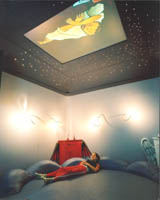 Temporary exhibitions at the museum invariably connect in some way to Judaism. In recent years exhibitions have featured work by artists such as Andy Warhol, Jozef Israëls and Marc Chagall. Shows have also featured photography, for example by Sem Presser and Erwin Blumenfeld, as well as surveys of cultural history. And naturally, the children’s exhibition Where Mokum is Home is well worth a visit. Mokum is the Jewish name for Amsterdam. Children, and adults too, are introduced to different aspects of Jewish tradition through interactive presentations, including matzo baking and learning to write Hebrew letters.
Temporary exhibitions at the museum invariably connect in some way to Judaism. In recent years exhibitions have featured work by artists such as Andy Warhol, Jozef Israëls and Marc Chagall. Shows have also featured photography, for example by Sem Presser and Erwin Blumenfeld, as well as surveys of cultural history. And naturally, the children’s exhibition Where Mokum is Home is well worth a visit. Mokum is the Jewish name for Amsterdam. Children, and adults too, are introduced to different aspects of Jewish tradition through interactive presentations, including matzo baking and learning to write Hebrew letters.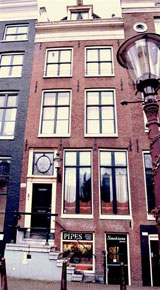 When political correctness threatens with imposing a strict ban on smoking all over Amsterdam, this museum about the pleasures of smoking would seem like defiance. But in reality this is a scientifically systematic exhibit of more than 2 thousands pipes, organized chronologically from pre-Columbian pipes, through Indians of South and North America, ending with Western civilization – Europe an America since the end of 15th C. until today.
When political correctness threatens with imposing a strict ban on smoking all over Amsterdam, this museum about the pleasures of smoking would seem like defiance. But in reality this is a scientifically systematic exhibit of more than 2 thousands pipes, organized chronologically from pre-Columbian pipes, through Indians of South and North America, ending with Western civilization – Europe an America since the end of 15th C. until today.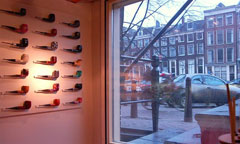 Today, the collection consists of 20 000 pipes, therefore only a fragment of it may be shown. The Pijpenkabinet has been recognized as a specialist historical collection, and its creators Don Duco and Benedict Goes, an authority in this field. And although smoking of tobacco is in serious retreat all over the Western World, the Pijpenkabinet grows and enlarges – last years it took over 15 collections from other institutions.
Today, the collection consists of 20 000 pipes, therefore only a fragment of it may be shown. The Pijpenkabinet has been recognized as a specialist historical collection, and its creators Don Duco and Benedict Goes, an authority in this field. And although smoking of tobacco is in serious retreat all over the Western World, the Pijpenkabinet grows and enlarges – last years it took over 15 collections from other institutions. 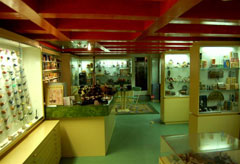 If you are a pipe addict, or just a history buff – this beautiful museum is highly recommended. And… this is probably the only museum in the world, where you may still smoke pipe.
If you are a pipe addict, or just a history buff – this beautiful museum is highly recommended. And… this is probably the only museum in the world, where you may still smoke pipe. On a most busy spot of Amsterdam, in an old townhouse - a small, modern museum has been launched responding to the growing popularity of vodka in the world. What vodka has to do with Amsterdam? – You may ask. Not much more than with any other big city, but Vodka Museum sited close to the nightlife heart of Amsterdam is fun.
On a most busy spot of Amsterdam, in an old townhouse - a small, modern museum has been launched responding to the growing popularity of vodka in the world. What vodka has to do with Amsterdam? – You may ask. Not much more than with any other big city, but Vodka Museum sited close to the nightlife heart of Amsterdam is fun.  You will find the Vodka Museum on Damrak, almost in front of the Central Station. The distance is walking – 2 minutes walk from the Central Station, 3 minutes walk from the Dam square.
You will find the Vodka Museum on Damrak, almost in front of the Central Station. The distance is walking – 2 minutes walk from the Central Station, 3 minutes walk from the Dam square.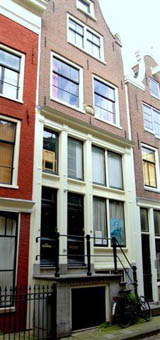 In a modest patrician house at one of the small streets of Old Amsterdam centre, there is a museum dedicated to one of the most celebrated Dutch writers. Eduard Douwes Dekker, who took the penname Multatuli, was born here in 1820 as the fourth child of the Dutch ship captain. After him one more son was born in the family, so they had to move to a bogger lodging. Multatuli’s upbringing although patricians, was very modest, with father mostly at sea and mother taking care of children.
In a modest patrician house at one of the small streets of Old Amsterdam centre, there is a museum dedicated to one of the most celebrated Dutch writers. Eduard Douwes Dekker, who took the penname Multatuli, was born here in 1820 as the fourth child of the Dutch ship captain. After him one more son was born in the family, so they had to move to a bogger lodging. Multatuli’s upbringing although patricians, was very modest, with father mostly at sea and mother taking care of children.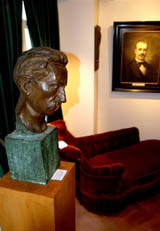 If you are interested in history, especially the history of the Netherlands, this museum will be a small, but intelligent addition.
If you are interested in history, especially the history of the Netherlands, this museum will be a small, but intelligent addition.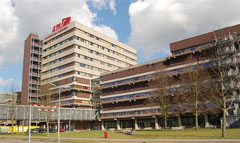 This established at the end of the 18th C. medical collection of pathological specimens, anomalous embryos, odd skulls and bones is used until today by the Faculty of Medicine students of the University of Amsterdam. Called after the name of its originators, 18th and 19th century anatomy professors from Amsterdam, Museum Vrolik is today one of the few museums of its kind in the world.
This established at the end of the 18th C. medical collection of pathological specimens, anomalous embryos, odd skulls and bones is used until today by the Faculty of Medicine students of the University of Amsterdam. Called after the name of its originators, 18th and 19th century anatomy professors from Amsterdam, Museum Vrolik is today one of the few museums of its kind in the world. 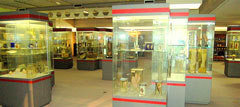 Today, the Museum Vrolik includes specimens from other collections, added through more than a century of its existance - the last addition of 150 specimens being as recent as in 1994. At present-day Museum Vrolik has not only a historical and didactical importance. The development of the molecular research gives the specimens of its collection scientific value, no lesser then in the times of its founders.
Today, the Museum Vrolik includes specimens from other collections, added through more than a century of its existance - the last addition of 150 specimens being as recent as in 1994. At present-day Museum Vrolik has not only a historical and didactical importance. The development of the molecular research gives the specimens of its collection scientific value, no lesser then in the times of its founders. 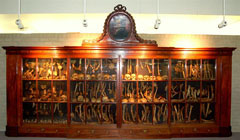 Admission: free
Admission: free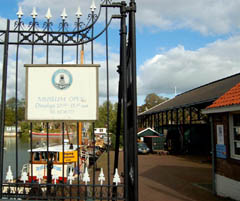 The Kromhout shipyards history started on May 11, 1757, when wealthy Amsterdam lady named Neeltje Hendrikse de Vries, bought a piece of land for her husband shipbuilder Doede Jansen Kromhout on one of the former marshes, now drained into new islands near Amsterdam.
The Kromhout shipyards history started on May 11, 1757, when wealthy Amsterdam lady named Neeltje Hendrikse de Vries, bought a piece of land for her husband shipbuilder Doede Jansen Kromhout on one of the former marshes, now drained into new islands near Amsterdam. 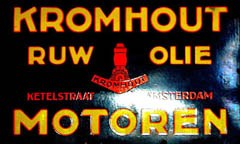 Housed in a beautiful 19th C. wrought iron hall, which used to stand in Amsterdam where now the Concertgebouw building is located, and had been taken apart and moved here to create space for the famous concert hall, this old-fashioned engines collection smells sea water, oil and iron. It is fun to visit for every shipbuilding aficionado or a kid dreaming about distant sea travels.
Housed in a beautiful 19th C. wrought iron hall, which used to stand in Amsterdam where now the Concertgebouw building is located, and had been taken apart and moved here to create space for the famous concert hall, this old-fashioned engines collection smells sea water, oil and iron. It is fun to visit for every shipbuilding aficionado or a kid dreaming about distant sea travels.  In one of the side streets between two canals of the lively old district Jordaan, below an art gallery in the style of 1970-ties, in a dark space of the cellar of one of the townhouses thousands of fluorescent stones shine. An obsession of one man – American artist Nick Padalino created here a small museum: named after the music album by Jimmy Hendrix from 1968 - Electric Ladyland or more formally - The Fluorescent Art Museum which is proud to be the first museum of its kind in the world, totally devoted to the fascination with fluorescence, moreover - making an art of it.
In one of the side streets between two canals of the lively old district Jordaan, below an art gallery in the style of 1970-ties, in a dark space of the cellar of one of the townhouses thousands of fluorescent stones shine. An obsession of one man – American artist Nick Padalino created here a small museum: named after the music album by Jimmy Hendrix from 1968 - Electric Ladyland or more formally - The Fluorescent Art Museum which is proud to be the first museum of its kind in the world, totally devoted to the fascination with fluorescence, moreover - making an art of it. 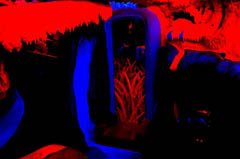 To visit Electric Ladyland is like to travel into the aura of the Flower Power movement, the world of the psychedelic art and music of the 1970-ties. Take you iPod with you and just enjoy it listening to the music you like. The exhibit may look amateurish, but it works - Electric Ladyland is fantastic and genuinely interesting. We recommend it not only for the Flower Power generation. If you are interested in minerals or specifically in fluorescence – do not miss it.
To visit Electric Ladyland is like to travel into the aura of the Flower Power movement, the world of the psychedelic art and music of the 1970-ties. Take you iPod with you and just enjoy it listening to the music you like. The exhibit may look amateurish, but it works - Electric Ladyland is fantastic and genuinely interesting. We recommend it not only for the Flower Power generation. If you are interested in minerals or specifically in fluorescence – do not miss it.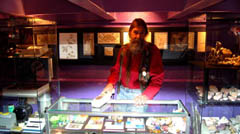 Walking from Anne Frank House – 5 minutes; from Central Station - 20 minutes walk. From Central Station trams 13, 17 (stop Westermarkt), bus 170, 172 (stop Westermatkt); also tram 14 (stop Westermarkt) and tram 10 (exit on stop Bloemgracht).
Walking from Anne Frank House – 5 minutes; from Central Station - 20 minutes walk. From Central Station trams 13, 17 (stop Westermarkt), bus 170, 172 (stop Westermatkt); also tram 14 (stop Westermarkt) and tram 10 (exit on stop Bloemgracht).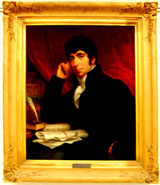 Willem Bilderdijk (1756-1831) was one of the most interesting figures in the in the 19th century history of the Netherlands. A lawyer by education, only shortly worked as an attorney dedicating most of his active life to his studies, his writings and his teachings. Bilderdijk became an influential personage of the Dutch literature - a poet, writer, thinker, but also an important person for politics in the Netherlands, as a supporter of the constitutional monarchy of the dynasty of Orange.
Willem Bilderdijk (1756-1831) was one of the most interesting figures in the in the 19th century history of the Netherlands. A lawyer by education, only shortly worked as an attorney dedicating most of his active life to his studies, his writings and his teachings. Bilderdijk became an influential personage of the Dutch literature - a poet, writer, thinker, but also an important person for politics in the Netherlands, as a supporter of the constitutional monarchy of the dynasty of Orange.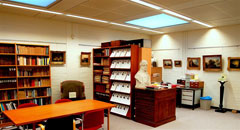 The Bilderdijk Museum is more a large, well organized reading room, with a rich collection of memorabilia, than a real museum. Nevertheless, located in a modern university building collection surprises with is impressive care for a detail and with love of tradition. In our opinion this small museum is a must for the Dutch history and literature lover.
The Bilderdijk Museum is more a large, well organized reading room, with a rich collection of memorabilia, than a real museum. Nevertheless, located in a modern university building collection surprises with is impressive care for a detail and with love of tradition. In our opinion this small museum is a must for the Dutch history and literature lover.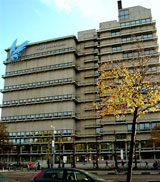 Bilderdijk Museum is located in a big modern building of the Amsterdam Free University (Vrije Universiteit - VU); room 1B-41/31; entry through the Department of Old Prints of the VU Library. The best is to enter through VU the main entry and go to the left to the wing B. You will find the Bilderdijk Museum on the second floor, behind the library.
Bilderdijk Museum is located in a big modern building of the Amsterdam Free University (Vrije Universiteit - VU); room 1B-41/31; entry through the Department of Old Prints of the VU Library. The best is to enter through VU the main entry and go to the left to the wing B. You will find the Bilderdijk Museum on the second floor, behind the library.
